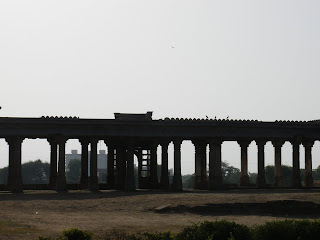

At the time when Ahmedabad city was built, which was during the reign of Ahmed Shah (1440-1443 A.D.), Sarkhej was a village with a population consisting of weavers and indigo-dyers who were predominantly Hindu. It became associated with the name of Shaikh Ahmed Khattu Ganj Baksh, a Sufi saint and a friend/advisor to Sultan Ahmed Shah, who in his later years retired to the quiet environment of Sarkhej, away from the city. The saint lived till he was 111 years of age and was greatly venerated during his lifetime. Myths about his miraculous powers are prevalent even today. Lives and teachings of Shaikh Ganj Baksh Khattu Upon his death in 1445, the reigning monarch, Mohammed Shah ordered a mausoleum built in his honour, along with a mosque. The construction of these two monuments were completed in 1451 A.D., by his successor Qutb'ud-Din Ahmed Shah.
indigenous Hindu and Jain features to form a composite “Indo-Saracenic” architectural style. The architectural style of Sarkhej Roza is a precursor to the Mughal period in a true amalgamation of Hindu, Jain and Islamic styles. Hindu craftsmanship and construction know-how was overlaid on Islamic sense of geometry and scale. The Roza Complex at Sarkhej was built at the advent of Sultanate era.





